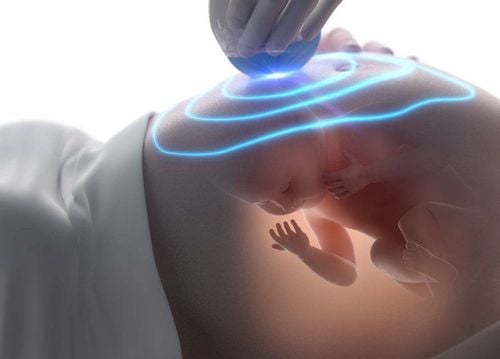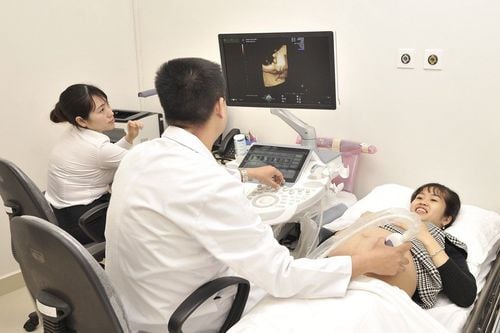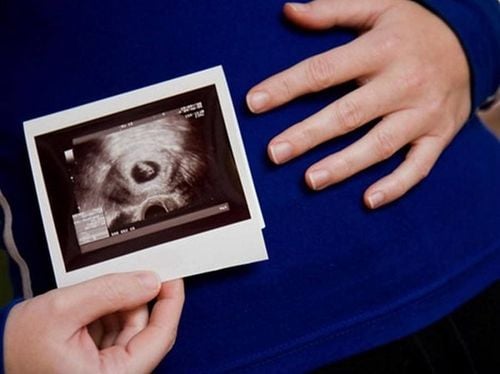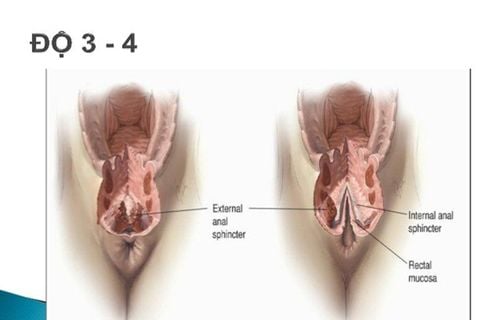This is an automatically translated article.
The article was professionally consulted by Specialist Doctor I Pham Thi Yen - Obstetrics and Gynecology Department - Vinmec Hai Phong International General HospitalThe stage of labor is the progression of many phenomena, the most important being uterine contractions that make the cervix gradually dilate and as a result, the fetus and placenta are expelled. Maternal care in labor plays an important role directly related to the health and well-being of the mother and newborn.
1. Stages of labor
Stage 1: Cervical dilation from actual labor to full dilation: average time is 15 hours.
Latent period: 8 hours. Active period: 7 hours. Stage 2: Pregnancy from the time the cervix is fully dilated until the pregnancy comes out.
Compare: 30 minutes – 2 hours, average 50 minutes. Straw: 15 minutes – 1 hour, average 20 minutes. Stage 3: The placenta is delivered from the time the placenta is delivered until the placenta comes out on average 5-30 minutes.

2. Maternity care in labor
2.1. Stage 1 Full body examination, measure vital signs: measure pregnant woman's height, weight, pulse, blood pressure, temperature, breathing rate, urine output / 4 hours, in case the mother has medical conditions that need to be followed Closely monitor pulse, blood pressure, urinary circulation if pre-eclampsia, eclampsia, monitor temperature every 30 minutes, every 1 hour depending on the status of the mother. Perform paraclinical tests: hematology, blood group, urinalysis, if the pregnant woman has not been tested for HIV during pregnancy, a rapid HIV test should be performed, if the rapid test result is positive, pregnant women take HIV drugs quickly to reduce the risk of infecting their babies while waiting for testing to confirm. Examine and monitor uterine contractions. Properties: including duration of uterine contractions, resting time, intensity of uterine contractions, basal muscle tone.
Uterine contractions:
If the contractions are intense, the cause must be found: mechanical causes (abnormal cephalothorax, abnormal position) → cesarean section, if not due to mechanical causes → give antispasmodics. If contractions are weak or sparse: give oxytocin tocolytics. Fetal heart rate:
Fetal heart rate and contractions should be monitored by monitoring for high-risk pregnancies. If monitoring monitoring should be measured in 30 minutes in stage 1 and 15 minutes in stage 2. Place of hearing: depending on the position of the fetal position. Normally, fetal heart rate fluctuates between 120-160 beats/minute, which is clear. Abnormal: less than 120 beats/min, faster than 160 beats/min, or irregular fetal heart rate, distant hearing. Fetal heart rate < 120 beats/min when the head is inserted is because the fetal head is compressed causing stimulation of the X nerve → fetal heart rate slows → let the mother lie on the left side to avoid the uterus pressing on the inferior vena cava. Vaginal examination: The number of vaginal exams is related to the rate of infection, especially in the case of ruptured membranes. There is no set standard for the number of vaginal exams, usually at admission, every 4 hours during the period of latency and once an hour during the active period, before analgesia, when the woman is pregnant. want to push and when the fetal heart rate is abnormal. Thai throne:
Determine the throne: based on the landmark of the throne. Determine the phenotype: match between the landmark of the fetus and the landmark of the mother's pelvis. Reach:
The baby is in the last month of pregnancy, the baby is in labor. Amniotic fluid status:
Check after spontaneous rupture of membranes to see if there is umbilical cord prolapse. Amniotic fluid is formed by uterine contractions. Hygiene and eating:
Hygiene of the vulva and perineum: avoid water entering the vaginal opening, do not place a urinary catheter, but encourage pregnant women to urinate often to empty the bladder. Eating and drinking should not be done during active labor and delivery because food cannot be absorbed and the mother is at risk of vomiting, aspiration pneumonia during emergency cesarean section.
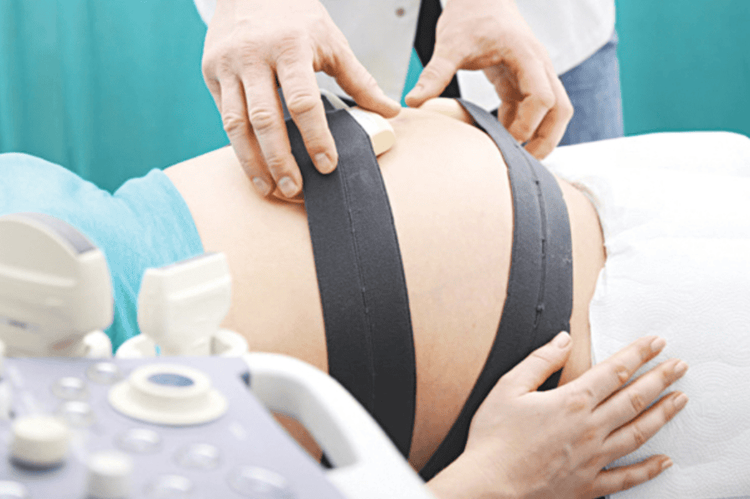
2.2. Stage 2: Fetal delivery This stage is counted from the time the cervix is fully dilated until the pregnancy is completely passed out. This is the result of increased intrauterine pressure during each contraction along with the effective pushing of the mother. The factors that determine whether or not a vaginal delivery is possible are based on:
Contractions: The intensity and frequency of contractions Fetal: including the size, position and penetration of the fetus. Mother's pelvis, mother's pushing During this period, fetal heart rate should be monitored every 5 minutes. contractions can be 1 minute 30 seconds and rest time not more than 1 minute.
Determine the type and position of the fetal position. Instruct the mother to push when the uterine contractions are fully dilated. Midwifery: Take umbilical cord blood for some tests such as blood group, Rh, ... or to send it to a cord blood bank. 2.3. Stage 3: Placental delivery This stage is counted from the time the fetus is born until the appendix is completely removed. In this stage, there are placental detachment and expulsion part.
Check the placental membrane:
See if the placenta is enough: the hole is round and round, if the hole is torn, the membrane is jagged, watch out for the lack of the placenta. Is there an accessory placenta: see if the blood vessel from the umbilical cord terminates at the edge of the placenta, if the blood vessels extend to the membrane, an accessory placenta is present. Measure the distance from the tear hole of the placenta to the edge of the placenta if less than 10 cm is low adhesion. Check each other:
See if each other is enough. Is there a posterior hematoma? Degree of placental calcification. Weigh and measure the diameter of the placenta. Check the umbilical cord:
Place of attachment of the umbilical cord at the placenta: center of the placenta, adhesion to the membrane, attachment to the edge of the placenta. Umbilical cord diameter, umbilical cord length. The umbilical cord is knotted, the blood vessels of the umbilical cord.
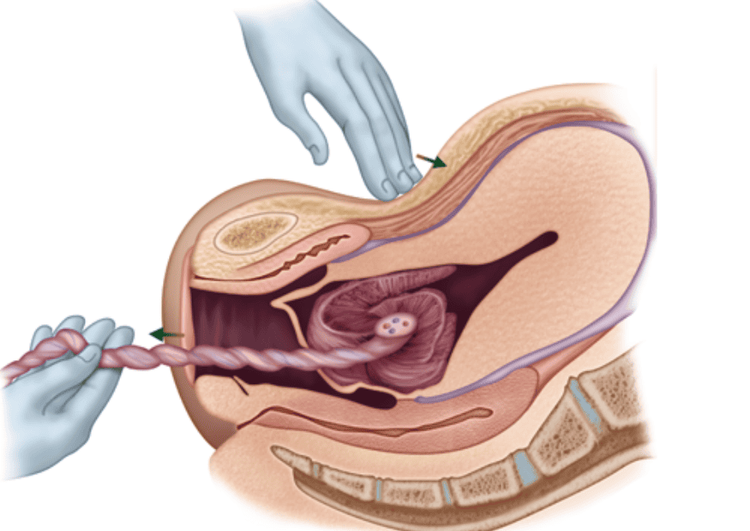
At Vinmec International General Hospital, there is a package maternity service as a solution to help pregnant women feel secure because of the companionship of the medical team throughout the pregnancy. When choosing Maternity Package, pregnant women can:
The pregnancy process is monitored by a team of qualified doctors Regular check-up, early detection of abnormalities Maternity package helps to facilitate the process. birthing process Newborns get comprehensive care
Please dial HOTLINE for more information or register for an appointment HERE. Download MyVinmec app to make appointments faster and to manage your bookings easily.





